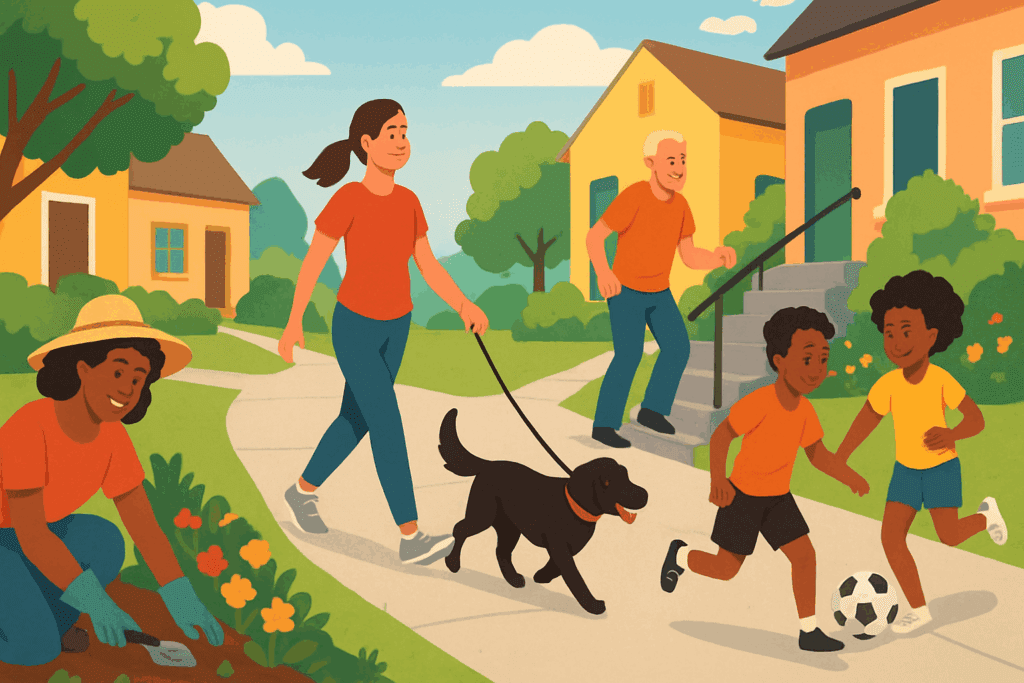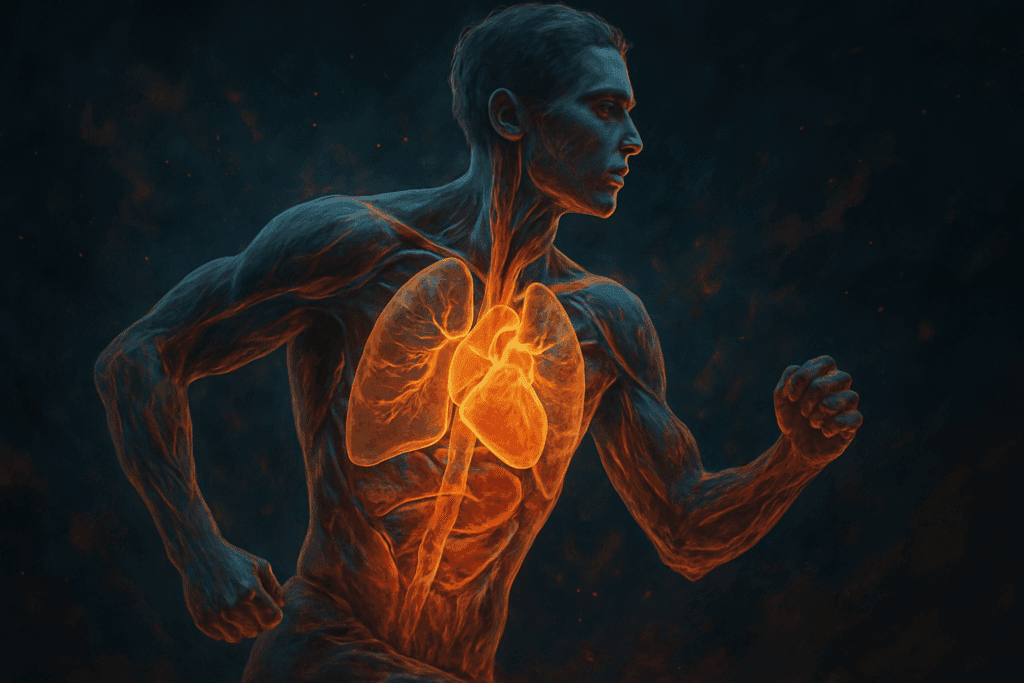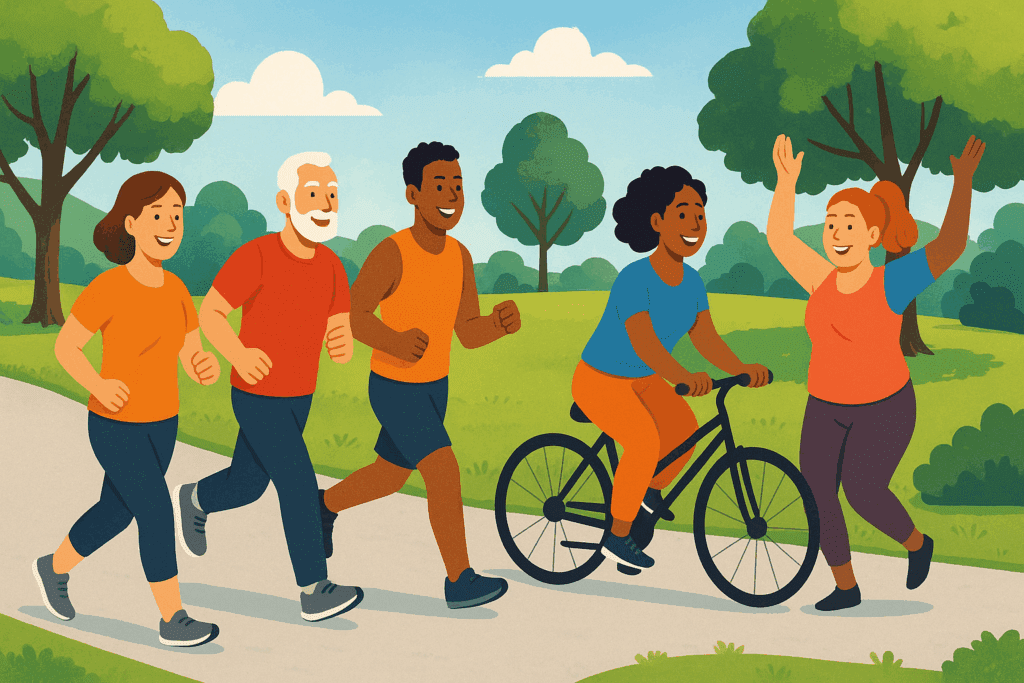Understanding the Foundations: What Is Physical Activity Exercise?
At its most essential level, physical activity exercise refers to any bodily movement produced by skeletal muscles that requires energy expenditure. This encompasses a wide range of motions, from routine daily tasks like walking and climbing stairs to more structured forms such as aerobic workouts and strength training. The term is often used interchangeably with “exercise,” though it’s important to recognize that while all exercise is physical activity, not all physical activity qualifies as structured exercise. The distinction lies in the intent: exercise typically follows a planned, purposeful, and repetitive pattern designed to improve or maintain physical fitness.
You may also like: How to Increase Stamina and Endurance Naturally: Smart Training Tips and Nutrition Habits That Support Cardiovascular Fitness
When considering what is physical activity exercise, it becomes essential to look beyond rigid fitness regimens and consider the vast scope of movements that contribute to health and performance. Gardening, household chores, recreational sports, and active commuting are all viable examples. From an endurance and stamina training perspective, the primary focus often falls on cardiovascular and muscular endurance improvements—achieved through both structured workouts and lifestyle-based physical movements. A comprehensive understanding of these elements helps individuals create sustainable habits that foster long-term performance enhancement and holistic health benefits.
Moreover, physical activity is not solely about aesthetics or body composition. Its role in enhancing cardiovascular function, metabolic efficiency, immune resilience, and even mental health has been widely documented in medical literature. It serves as both preventive medicine and a form of functional rehabilitation, supporting recovery, balance, and overall vitality. Therefore, grasping the full meaning of what is physical activity exercise is foundational not only for fitness enthusiasts but for anyone seeking to live with greater vigor and physical capability.

The Science Behind Movement: How Physical Activity Enhances Endurance and Stamina
Endurance and stamina represent the body’s capacity to sustain prolonged physical effort. They are cultivated through consistent engagement in physical activity, which conditions the heart, lungs, and muscles to operate more efficiently over time. This transformation begins at the cellular level, where increased mitochondrial density and improved oxygen uptake mechanisms play a pivotal role. Activities that raise the heart rate for extended periods—such as brisk walking, swimming, cycling, or running—are particularly effective in building cardiovascular endurance.
Muscular stamina, on the other hand, refers to a muscle or muscle group’s ability to exert force repeatedly without fatiguing. It is developed through resistance training, bodyweight exercises, and even isometric holds like planks. The process relies heavily on metabolic adaptations such as improved glycogen storage and lactate threshold tolerance. Regular engagement in these activities helps muscles become more fatigue-resistant, translating to enhanced performance in both athletic and everyday contexts.
The impact of these physiological changes is far-reaching. Improved endurance supports better posture, coordination, and reaction times—factors essential not only in competitive sports but also in injury prevention and functional longevity. Additionally, enhanced stamina contributes to cognitive performance by promoting better blood flow and nutrient delivery to the brain. For those who understand what is physical activity exercise and practice it intentionally, the rewards are multidimensional and transformative.

Examples of Physical Activity That Promote Endurance Naturally
Identifying effective examples of physical activity that support endurance and performance begins with recognizing the wide array of options available. Walking, often underestimated, is one of the most accessible and sustainable forms of physical activity. When performed at a brisk pace or for extended periods, it significantly elevates heart rate and builds cardiovascular capacity. Regular walking also supports joint mobility, improves mood, and requires minimal equipment—making it ideal for individuals of all fitness levels.
Jogging and running offer progressive benefits, particularly in developing aerobic endurance and mental toughness. As weight-bearing activities, they also contribute to bone density and muscular resilience. For those with joint concerns, swimming serves as an excellent low-impact alternative that challenges both muscular and cardiovascular systems. The resistance of water naturally increases exertion, while buoyancy reduces strain on joints, offering a balanced, full-body workout.
Cycling, whether on a stationary bike or outdoors, provides another versatile method for boosting stamina. It engages major muscle groups in the lower body while supporting heart and lung function. More dynamic options like dance-based fitness classes or circuit training combine aerobic intensity with coordination, making them both physically beneficial and mentally stimulating. These diverse examples of physical activity allow individuals to tailor their routines to personal preferences, fitness goals, and physical needs.

Structured Exercise vs. Incidental Movement: What Counts and Why It Matters
Understanding the distinction between structured exercise and incidental movement deepens the concept of what is physical activity exercise. Structured exercise includes deliberate routines such as scheduled gym sessions, yoga classes, or a specific running program. These activities are performed with defined goals, measured intensity, and progression strategies. They are particularly effective for targeting specific performance outcomes such as increased VO2 max, improved muscle tone, or enhanced flexibility.
In contrast, incidental movement refers to the unplanned physical activity that occurs as part of daily life. Walking the dog, climbing stairs, carrying groceries, and playing with children all contribute to overall energy expenditure and can offer notable endurance benefits when accumulated consistently. While they may not offer the same measurable gains as structured sessions, their importance in supporting metabolic health, mobility, and overall vitality cannot be overstated.
Both forms of movement play integral roles in maintaining a physically active lifestyle. Structured exercise offers precision and accountability, while incidental activity introduces spontaneity and functional integration. Ideally, a balance between the two creates a holistic approach to endurance training, ensuring that physical activity remains both effective and sustainable. In redefining what is physical activity exercise through this broader lens, individuals empower themselves to make daily choices that compound into significant health improvements.

Performance Enhancement Through Natural Physical Activity Modalities
Performance enhancement often evokes images of elite athletes and high-intensity training regimens, but the reality is that significant gains can be achieved through consistent, natural forms of physical activity. Hiking, for example, is a multifaceted exercise that improves leg strength, cardiovascular capacity, and balance. The varied terrain challenges stabilizing muscles and engages the core, making it an excellent activity for building endurance while enjoying nature’s restorative effects.
Rowing—whether on water or with an indoor ergometer—provides a full-body, low-impact workout that combines cardiovascular exertion with muscular endurance. It engages major muscle groups in both the upper and lower body, promoting coordination and stamina. Martial arts and combat sports, such as boxing or Brazilian jiu-jitsu, offer high-intensity cardiovascular conditioning along with improved reflexes, agility, and mental focus. These disciplines require both physical and cognitive engagement, fostering a heightened sense of awareness and resilience.
Even recreational sports like tennis, soccer, and basketball offer dynamic, high-energy workouts that stimulate both anaerobic and aerobic energy systems. The quick bursts of movement, directional changes, and strategic decision-making involved provide comprehensive training for physical and mental performance. These examples of physical activity demonstrate that high-level conditioning does not always require gym-based equipment or formal programs—natural, enjoyable movement can be equally powerful.

The Mental Edge: Cognitive and Emotional Benefits of Physical Activity
While much attention is paid to the physical advantages of regular movement, it is equally critical to understand how physical activity benefits the brain. Regular participation in exercise has been shown to reduce symptoms of anxiety and depression, elevate mood, and enhance overall cognitive function. These effects are mediated by physiological mechanisms such as increased endorphin production, enhanced blood flow to the brain, and the release of neurotransmitters like serotonin and dopamine.
When individuals commit to a physical activity routine, they often report improved focus, creativity, and mental clarity. This is especially evident in endurance-based activities like long-distance running or cycling, which promote a meditative state known as “flow.” In this state, the mind becomes immersed in the activity, reducing stress and promoting a sense of mastery and purpose. Moreover, physical activity has been linked to improved memory, sharper executive function, and reduced risk of cognitive decline in aging populations.
These benefits contribute directly to performance enhancement, both on and off the field. Mental stamina, focus, and emotional regulation are critical components of success in any endeavor. Thus, understanding what is physical activity exercise and applying that knowledge can yield not just physical but profound psychological rewards. Engaging in physical movement becomes not only a tool for fitness but a cornerstone of holistic mental wellness.
Personalizing Physical Activity: Tailoring Exercise to Your Lifestyle and Goals
The most effective physical activity plans are those that align with an individual’s interests, goals, and daily routine. Customizing your approach begins with identifying activities you enjoy—those that feel rewarding rather than obligatory. Enjoyment is a key predictor of adherence, which in turn determines long-term success. For some, that might mean early morning runs in the park; for others, it could be dance classes, home workouts, or weekend hikes.
Fitness goals also shape the nature of the physical activity chosen. Someone aiming to improve cardiovascular endurance may prioritize aerobic exercises like cycling or swimming, while those seeking muscular stamina might focus on resistance circuits or bodyweight training. The key is to establish a realistic, consistent routine that includes both structured and spontaneous forms of movement. This integrative model acknowledges that effective training need not be rigid—it must be practical, enjoyable, and adaptable.
Moreover, lifestyle factors such as work schedule, access to equipment, and physical limitations should inform activity choices. Understanding what is physical activity exercise through a personalized lens allows individuals to optimize results while minimizing the risk of burnout or injury. Creating a well-rounded plan that incorporates rest, variety, and progression ensures continual improvement and long-term sustainability.

Overcoming Barriers: Strategies for Staying Consistent with Physical Activity
Even with the best intentions, maintaining a regular physical activity routine can be challenging. Common barriers include time constraints, lack of motivation, physical discomfort, or environmental limitations. Overcoming these challenges requires both strategic planning and a mindset shift. Viewing physical activity as an investment in well-being—rather than a chore—can help reframe the experience and increase intrinsic motivation.
Breaking goals into smaller, manageable steps also fosters consistency. For example, committing to a 15-minute walk after lunch can eventually evolve into a more robust endurance training habit. Accountability through training partners, fitness tracking apps, or personal goals can further reinforce commitment. Flexibility is equally important—allowing for modifications in intensity or activity type based on mood, energy levels, or external circumstances ensures that physical activity remains sustainable over time.
Education plays a vital role as well. Understanding what is physical activity exercise and its multifaceted benefits provides powerful motivation to prioritize it amidst competing demands. When individuals see the tangible impact on their energy, focus, and overall health, they are more likely to integrate movement into their daily lives. In this way, endurance and performance become not just aspirations but accessible outcomes through consistent, purposeful activity.
Frequently Asked Questions: Physical Activity, Endurance, and Performance
1. How can physical activity be adapted for people with limited mobility or chronic conditions?
Adapting physical activity for individuals with limited mobility or chronic conditions involves thoughtful modification to ensure safety and effectiveness without sacrificing health benefits. Seated resistance exercises, chair yoga, aquatic therapy, and arm ergometers are all excellent examples of physical activity that accommodate physical limitations while enhancing cardiovascular function and muscular strength. Occupational therapists and rehabilitation specialists often tailor movement routines to target specific needs, such as joint flexibility, balance, or pain reduction. Understanding what is physical activity exercise in this context means broadening its definition to include therapeutic movement that respects individual physical boundaries. These adapted forms not only promote endurance and independence but also provide psychological benefits like reduced anxiety and improved mood.
2. Are there emerging technologies that can support endurance training through physical activity?
Yes, technology is transforming how we approach endurance training by making physical activity more personalized, data-driven, and engaging. Wearable fitness trackers, smartwatches, and connected heart rate monitors now allow individuals to monitor metrics such as VO2 max, lactate threshold, and recovery patterns in real time. Virtual reality (VR) workouts and gamified fitness apps also serve as innovative examples of physical activity that encourage consistency through immersive experiences. These tools enhance our understanding of what is physical activity exercise by integrating digital insights with traditional movement practices. As artificial intelligence advances, expect even more intelligent systems that adapt exercise routines based on biometric feedback and performance trends.
3. What are some overlooked psychological strategies that improve consistency in physical activity?
Beyond motivation, psychological resilience and behavioral conditioning are key to long-term consistency in physical activity. Techniques such as implementation intentions (“If X happens, I will do Y”) help automate decision-making, reducing the need for daily willpower. Visualization, journaling, and habit stacking—where a new activity is paired with an established routine—are additional cognitive strategies that increase adherence. Recognizing what is physical activity exercise as part of a lifestyle rather than an isolated event also fosters identity-based motivation, where individuals see themselves as “active people” rather than as someone who must remember to work out. These mental tools provide a cognitive foundation for sustaining physical movement even during low-motivation periods.
4. Can physical activity improve immune resilience and how?
Regular physical activity has a well-documented role in enhancing immune resilience by moderating inflammation, improving circulation of immune cells, and reducing the risk of chronic illness. Moderate-intensity endurance activities like walking, cycling, or low-impact aerobics stimulate the production and mobilization of lymphocytes and natural killer cells, which are essential for pathogen defense. Importantly, not all examples of physical activity need to be high-intensity to be effective—gentle, sustained movement has been shown to bolster the immune system without overstressing it. Understanding what is physical activity exercise includes appreciating how it regulates the hypothalamic-pituitary-adrenal (HPA) axis, reducing stress hormones that impair immune function. This connection makes consistent movement a foundational element of long-term health management.
5. How can physical activity support better sleep and recovery?
Engaging in regular physical activity improves sleep onset, depth, and duration by promoting thermoregulation and stabilizing circadian rhythms. Aerobic exercises and resistance training increase the production of adenosine, a neurotransmitter that promotes sleep pressure, and elevate serotonin levels, which influence melatonin synthesis. Notably, the timing of activity matters—late evening high-intensity workouts may delay sleep, while morning or early afternoon movement is generally more conducive to restful nights. These outcomes show how understanding what is physical activity exercise extends beyond fitness to include restorative health functions like sleep. Incorporating movement into daily routines can also reduce insomnia linked to stress, anxiety, and sedentary lifestyles.
6. What role does physical activity play in healthy aging and longevity?
Physical activity is one of the most potent, non-pharmaceutical interventions for extending healthspan and preserving independence in older adults. As people age, maintaining cardiovascular and muscular endurance helps reduce frailty, improve balance, and lower the risk of falls. Functional movement training, such as Tai Chi or water-based aerobics, are ideal examples of physical activity that promote joint integrity and mobility without excessive strain. Understanding what is physical activity exercise in later life includes acknowledging the cumulative effect of movement on bone density, cognitive preservation, and metabolic health. Studies consistently show that active older adults experience fewer hospitalizations, better mental well-being, and greater overall life satisfaction.
7. Are there cultural differences in how physical activity is integrated into daily life?
Absolutely. In many parts of the world, physical activity is not a scheduled event but a natural part of daily living. For example, in Scandinavian countries, walking, biking, and outdoor activities are deeply ingrained in the culture and supported by infrastructure. In contrast, urban environments in the U.S. often necessitate planned gym sessions due to car dependency and limited walkability. Recognizing global examples of physical activity highlights how movement can be organically woven into life rather than seen as an extra task. When rethinking what is physical activity exercise, cultural context helps us understand how societal norms and environments shape attitudes toward daily movement.
8. What nutritional practices can optimize the benefits of endurance-related physical activity?
Nutrition plays a pivotal role in maximizing the effects of endurance training. Consuming a balanced ratio of macronutrients—particularly carbohydrates and protein—supports muscle glycogen replenishment and tissue repair. Timing meals around physical activity sessions (i.e., pre-exercise fueling and post-exercise recovery nutrition) enhances stamina and reduces fatigue. Antioxidant-rich foods like berries, leafy greens, and nuts help combat oxidative stress generated during prolonged activity. These strategies highlight how a comprehensive approach to what is physical activity exercise should include not only movement but dietary practices that sustain performance. Hydration is also crucial, as even mild dehydration can impair endurance and thermoregulation.
9. How does community engagement influence physical activity habits?
Social support is a powerful predictor of physical activity adherence and enjoyment. Community-based programs, walking groups, intramural sports, and fitness classes create an environment of mutual accountability and shared motivation. These collective experiences often introduce new examples of physical activity that individuals may not explore on their own, such as partner-based resistance training or group hikes. Exploring what is physical activity exercise in a communal setting encourages both social cohesion and mental wellness. Moreover, shared goals and peer recognition can significantly enhance self-efficacy and long-term commitment.
10. What are the long-term neurological benefits of consistent physical activity?
Beyond its immediate cognitive benefits, physical activity supports long-term brain health by promoting neurogenesis, enhancing synaptic plasticity, and reducing the risk of neurodegenerative diseases. Aerobic activities, in particular, increase hippocampal volume and cerebral blood flow, which are associated with improved memory and executive function. Engaging in diverse movement patterns—such as dance, martial arts, or agility training—also stimulates coordination and motor learning pathways. These benefits expand our understanding of what is physical activity exercise by revealing its influence on lifelong mental acuity. By preserving neurological function, consistent movement becomes a cornerstone of cognitive longevity and emotional resilience.
Conclusion: Embracing the Full Potential of Physical Activity for Endurance and Performance
At its core, understanding what is physical activity exercise equips individuals with the knowledge to enhance their lives through movement. It empowers people to view exercise not as a narrow, gym-bound endeavor but as a rich spectrum of possibilities woven into everyday life. From the simplicity of walking to the rigor of structured training, the examples of physical activity are as diverse as the individuals who practice them. Each form offers unique benefits that support cardiovascular health, muscular endurance, cognitive performance, and emotional well-being.
By recognizing that both structured and spontaneous activities contribute to endurance and performance, individuals can craft routines that are both effective and sustainable. This flexible, inclusive approach allows for lifelong participation, continual growth, and deeper engagement with one’s body and mind. Through consistency, curiosity, and commitment, physical activity becomes a powerful tool for unlocking human potential in its most natural and transformative form.
Ultimately, the journey toward better performance and endurance is not limited to elite athletes or highly regimented programs. It is accessible to anyone willing to move with purpose, listen to their body, and embrace the wide range of opportunities that daily life presents. Whether through intentional training or simple daily actions, the power of physical activity to enhance quality of life is profound—and it begins with a single step.
Was this article helpful? Don’t let it stop with you. Share it right now with someone who needs to see it—whether it’s a friend, a colleague, or your whole network. And if staying ahead on this topic matters to you, subscribe to this publication for the most up-to-date information. You’ll get the latest insights delivered straight to you—no searching, no missing out.
Further Reading:
The Top 10 Benefits of Regular Exercise
Three Types of Exercise Can Improve Your Health and Physical Ability

